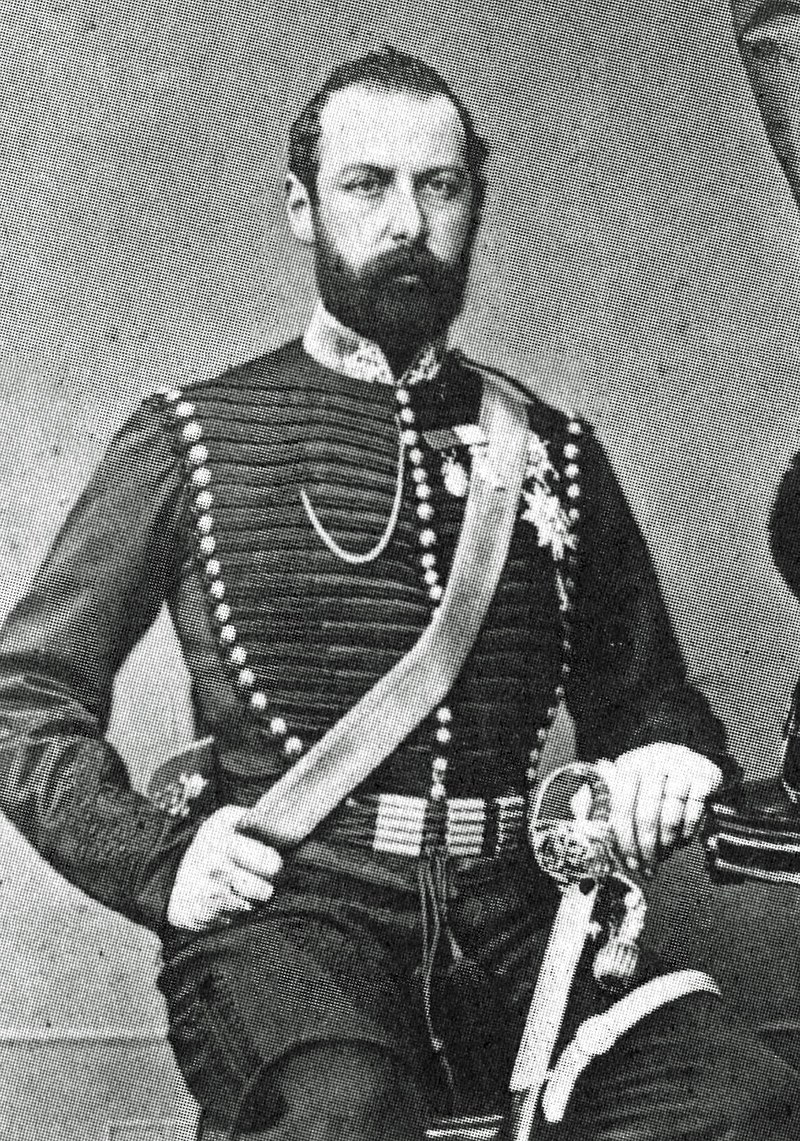By Scott Mehl © Unofficial Royalty 2015

source: Wikipedia
King Carl XV of Sweden
King Carl XV of Sweden (and King Karl IV of Norway) was the third monarch of the Bernadotte dynasty which has reigned in Sweden since 1818. He was born Prince Carl Ludwig Eugen of Sweden, Duke of Skåne, on May 3, 1826, at the Royal Palace of Stockholm, the eldest child of King Oscar I of Sweden and Josephine of Leuchtenberg. He had four younger siblings:
- Prince Gustaf, Duke of Uppland (1827-1852), unmarried, died of typhoid fever
- King Oscar II (1829-1907), married Sophia of Nassau, had issue
- Princess Eugenie (1830-1889), unmarried
- Prince August, Duke of Dalarna (1831-1873), married Therese of Saxe-Altenburg, no issue
Carl was educated privately, earning his baccalaureate in December 1843, and then studied at the Academy of Fine Arts in Christiania (Oslo) and the University of Uppsala. From a young age, he was drawn to the arts. He served as an officer in the Swedish army, having been given his first officer’s commission in 1841 by his grandfather, King Carl XIV Johan. Following his father’s accession to the throne in 1844, and following a tradition dating back to the 1700s, Carl was appointed chancellor of the Universities of Uppland and Lund in 1844.

source: Wikipedia
On June 19, 1850, Carl married Princess Louise of the Netherlands at the Storkyrkan (Great Church) in Stockholm. She was the daughter of Prince Fredrik of the Netherlands (a son of King Willem I) and Princess Luise of Prussia (a daughter of King Friedrich Wilhelm III). The marriage had been arranged by Carl’s father who wanted to establish familial relationships between the relatively new Bernadotte dynasty and some of the much older ruling dynasties in Europe. They had two children:
- Princess Louise, Queen of Denmark (1851-1926) – married King Frederik VIII of Denmark, had eight children including King Christian X of Denmark and Prince Carl of Denmark, later King Haakon VII of Norway
- Prince Carl Oscar, Duke of Södermanland (1852-1854) – died in infancy
The marriage was never particularly happy. While Louise was smitten with her husband, he was rather indifferent to her and took many mistresses and fathered several illegitimate children. After the death of their son in 1854, and discovering that she could no longer bear children, Louise offered Carl a divorce but he refused.
In February 1856, Carl was appointed Viceroy of Norway and spent a year and a half in his father’s “other land”. While in Norway, Carl indulged his interest in drawing and painting, along with his desire to be involved in politics. He developed a strong friendship with King Frederik VII of Denmark, which led to improved relations between the Scandinavian countries. In September 1857, Carl returned to Sweden where he served as Regent for his ailing father for nearly two years.

source: Wikipedia
Upon his father’s death on July 8, 1859, Carl ascended to the thrones of Sweden – as King Karl XV – and Norway – as King Karl IV. He was crowned in Sweden on May 3, 1860, and in Norway on August 5, 1860. Despite his abrupt manner, he is noted as one of the most successful sovereigns in Sweden. During his reign, he oversaw the enactment of communal law, ecclesiastical law, and criminal law, and in 1858, passed the law of legal majority for unmarried women. He is also noted for helping Louis de Geer in reforming the Swedish Parliament in 1866.

Tombs of King Carl XV and Queen Louise. photo © Susan Flantzer
After becoming ill the previous year, King Karl XV died from tuberculosis on September 18, 1872, in Malmö, Sweden. He is buried in the Riddarholmen Church in Stockholm. As he had no surviving son, the Swedish and Norwegian thrones passed to his younger brother, King Oscar II. However, through his daughter, King Karl XV’s descendants occupy the thrones of Belgium, Denmark, Luxembourg, and Norway, along with the former throne of Greece.
This article is the intellectual property of Unofficial Royalty and is NOT TO BE COPIED, EDITED, OR POSTED IN ANY FORM ON ANOTHER WEBSITE under any circumstances. It is permissible to use a link that directs to Unofficial Royalty.
Kingdom of Sweden Resources at Unofficial Royalty
